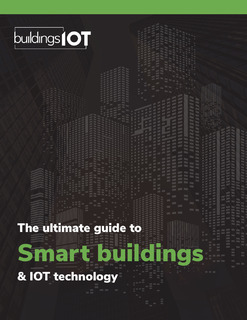Smart buildings have been around for a long time, though not in the form in which they exist today.
Building automation goes back to the late 1800s, when a Wisconsin schoolteacher named Warren Johnson invented the thermostat. While early automation focused on controlling indoor environmental conditions, a budding environmental movement in the 1960s and an ensuing energy crisis in the early 1970s saw energy conservation begin to drive building design. The arrival of digital building controls, building information modeling, open protocols, and WiFi further transformed the way buildings function.
Today, networked IoT devices, cloud computing, and analytics driven by machine learning (ML) are revolutionizing smart buildings in ways never before possible. But capitalizing on this cutting-edge technology requires understanding your options.

